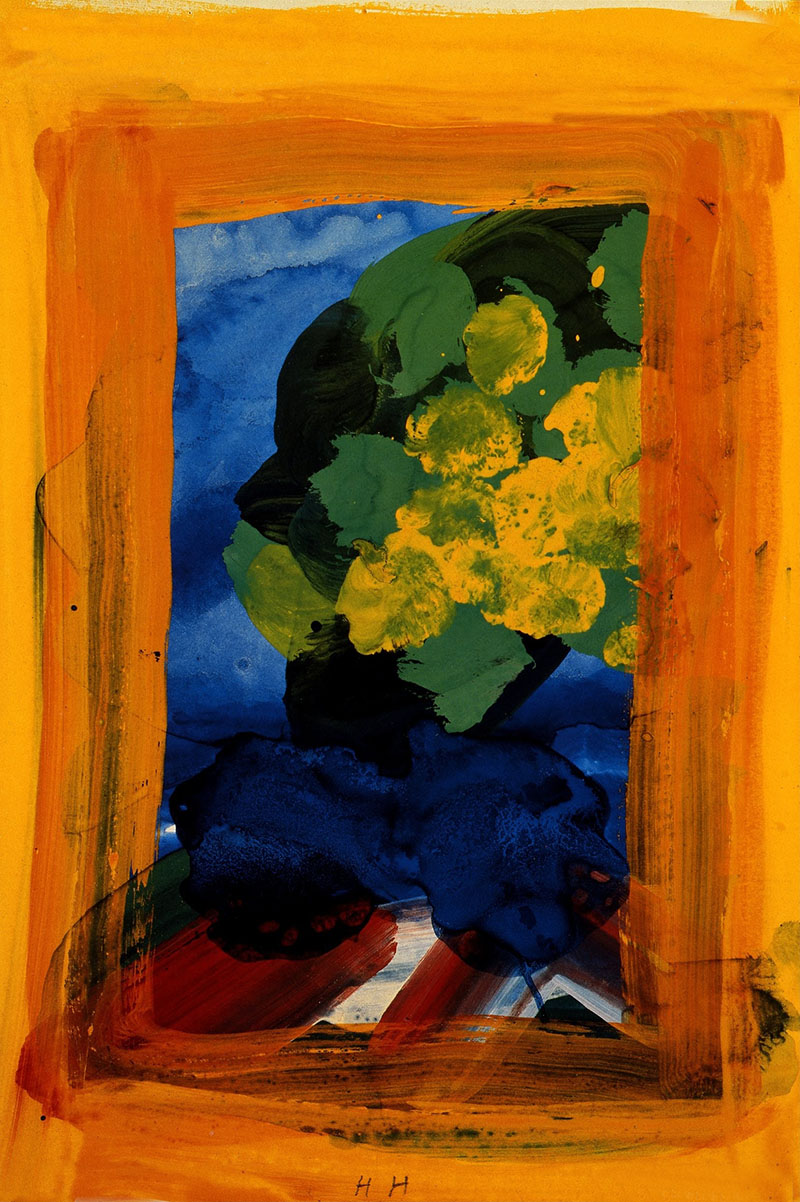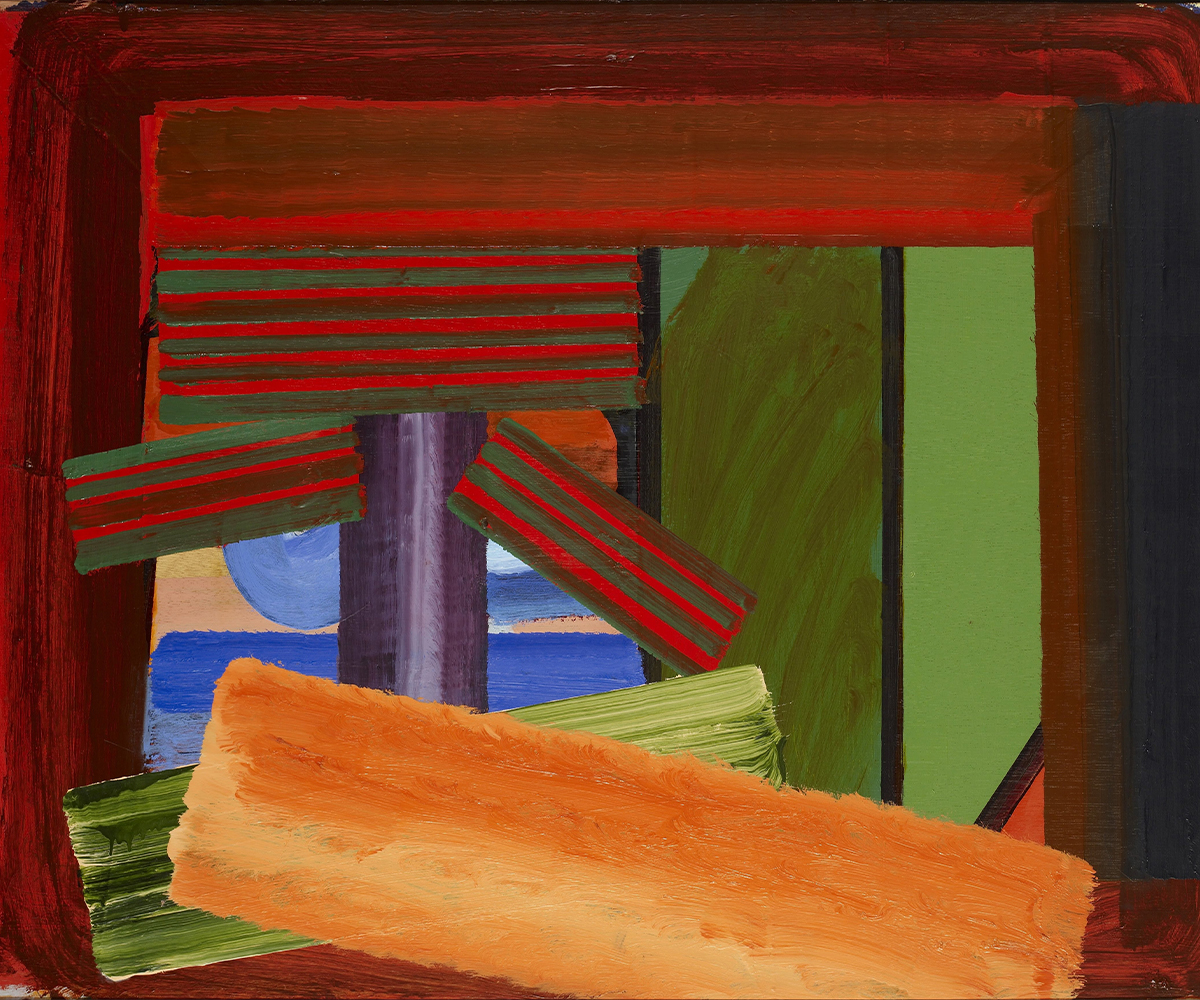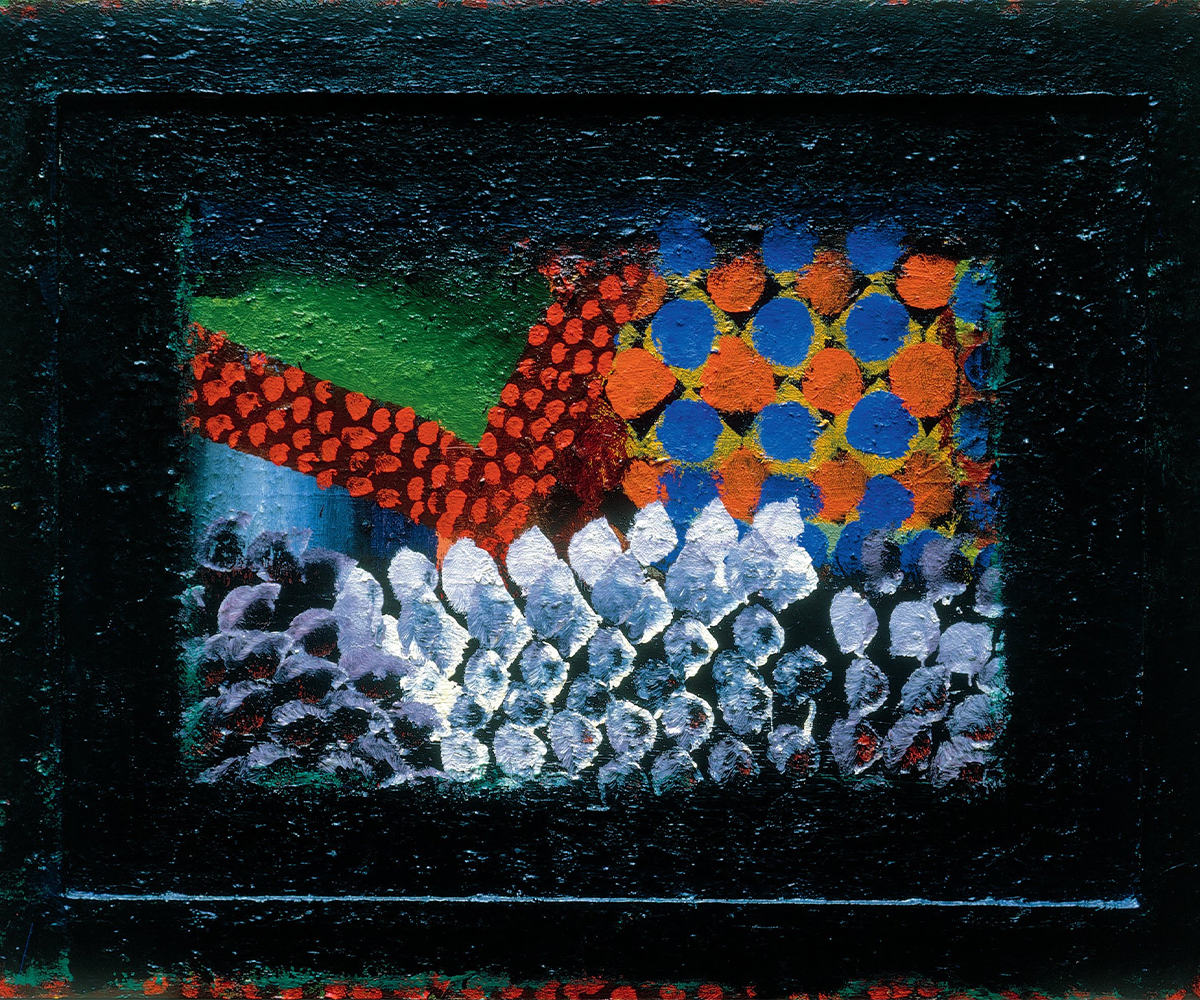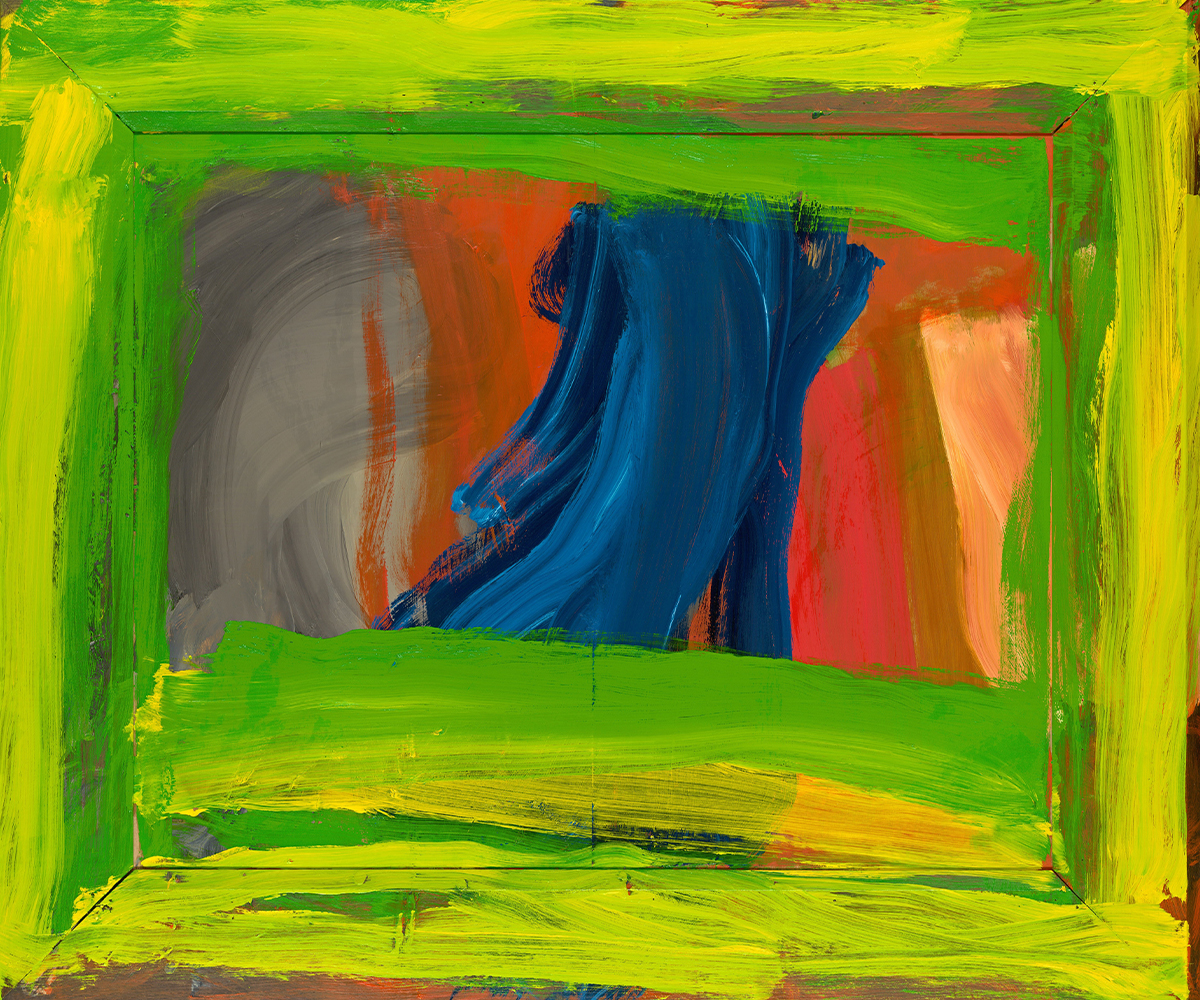ARTICLE
Howard Hodgkin (b.1932, d. 2017)
Hodgkin first visited India in 1964, accompanying Robert Skelton, who was the curator of the Victoria & Albert Museum’s Indian collection at the time. Already fascinated with Indian art since his time at Eton and having dabbled in buying individual pieces since the age of fourteen, Hodgkin began to seriously collect Indian paintings — and to a lesser extent, textiles and other craft items — for the rest of his life, both from India itself and from dealers in the West. He eventually attempted to sell his collection of 122 paintings, dating mostly from the sixteenth to nineteenth centuries, to the Ashmolean Museum in Oxford in 2017 shortly before his death. As the collection had been assembled over five decades and on the basis of aesthetic value rather than provenance, most of the paintings did not have a history of legitimate sales before Hodgkin had acquired them. As a result, the museum could not accept the offer, as Hodgkin insisted that all the paintings be bought as a whole collection and not individually. In 2021, the Metropolitan Museum of Modern Art in New York expressed an interest in buying the collection, which is currently managed by his partner Peattie.
Apart from his interest in Indian art, Hodgkin was very taken with the country itself after his first trip. He returned often, for a while even annually, with Peattie. He visited various cities of historical importance, while using his time in Mumbai — a fixture in all his trips — to establish relations with many notable members of the Indian art community over the years, such as Bhupen Khakhar, Krishna Reddy, Geeta Kapur and Shanay Jhaveri.
Hodgkin often maintained that, barring a few rare exceptions such as Bombay Sunset (1972–73), his work as an artist was not influenced by his collection of Indian paintings. By the time Hodgkin began to visit India regularly, his style had decidedly shifted into abstractionism. The forms and palette he used were based on what was, to him, the vast range of bright colours and chaos of life in India. He was particularly interested in the effect of the seasons on the coastal landscape, especially the monsoon storms. In this regard, a significant series — which Hodgkin considered a single unified work — is Indian Waves (1990–91), for which he first prepared a textured intaglio print on different sheets of khadi paper, with blue pigment applied to the lower half and green to part of the upper half. He then painted over these with gouache, essentially populating a seaside landscape with different forms and colours. One of his most significant projects in India is a mural of a banyan tree at the British Council headquarters in New Delhi, which he designed as part of the building’s plan with architect Charles Correa in 1992. The tree is not painted but composed of kadappa stone — a black limestone from southern India — and white marble, spread across surfaces at different angles above the front entrance.
The paintings that Hodgkin made in India are often considered a distinct body of work within his oeuvre. Notable shows of these include Made in Mumbai, at the Chhatrapati Shivaji Maharaj Vastu Sangrahalaya, Mumbai in 2016, and Howard Hodgkin: Painting India at The Hepworth Wakefield, London 2017. His collection, in parts or as a whole, was exhibited in Indian Paintings and Drawings from the Collection of Howard Hodgkin at the British Museum in 1991; Indian Court Painting: 16th–19th Centuries at The Metropolitan Museum of Art in 1997; The Adventures of Hamza: Painting and storytelling in Mughal India at the Arthur M. Sackler Gallery, Smithsonian Institution, Washington D.C. in 2002; and Visions of Mughal India: The Collection of Howard Hodgkin at the Ashmolean Museum in 2012.
The artist died in London in 2017.
Bibliography
Alberge, Dalya. “Mystery over origins of Howard Hodgkin’s Indian art collection could see it lost to UK.” The Guardian. April 11, 2021. Accessed June 17, 2022. https://www.theguardian.com/artanddesign/2021/apr/11/mystery-over-origins-of-howard-hodgkins-indian-art-collection-could-see-it-lost-to-uk.
Black, Holly E J. “How India Was an Enduring Inspiration for Howard Hodgkin.” Culture Trip. July 06, 2017. Accessed June 17, 2022. https://theculturetrip.com/europe/united-kingdom/articles/how-india-was-an-enduring-inspiration-for-howard-hodgkin/.
Hodgkin, Howard. “About my Collection.” Asian Art, 1991. https://howard-hodgkin.com/indian-collection/resource/about-my-collection.
“Howard Hodgkin.” Gagosian. April 12, 2018. Accessed June 17, 2022. https://gagosian.com/artists/howard-hodgkin/.
“Howard Hodgkin: Painting India.” The Hepworth Wakefield. July 1, 2017. Accessed June 17, 2022. https://hepworthwakefield.org/whats-on/howard-hodgkin-painting-india/.
Niesewand, Nonie. “Howard Hodgkin: 1932-2017.” Architectural Digest India. March 10, 2017. https://www.architecturaldigest.in/content/howard-hodgkin-1932-2017/.
Wroe, Nicholas. “The colour of emotion.” The Guardian. March 24, 2001. Accessed June 17, 2022. https://www.theguardian.com/books/2001/mar/24/books.guardianreview3.










